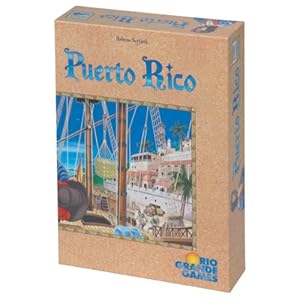Card games offer a special approach to game driven chaos
through a randomized deck. An individual card will often have a range of
usefulness relative to the other cards in your hand. In a game of five card
draw, there is a straightforward desire for higher value cards and a single
deuce can often be discarded without thought. If given an initial hand
beginning with a pair twos, suddenly an additional two would add tremendous
value. Card games all utilize this to some degree.
In Dominion, many players are impressed with the ability to
“build your own machine” deck construction mechanics. I was enamored with the
idea that it embraced the aspect of unproductive cards with an all or nothing
approach of victory cards. In the base game victory cards are a hindrance for
the duration of the game until final scoring in which they are the only means
in order to win. Everyone who has played even one game of Dominion has
experienced the dreaded mostly green hand for which the actions on a turn are
severely diminished. Dominion was the first instance of an all-or-nothing
approach to the usefulness of cards I had observed in game design.
The brilliance of the design of the Pokemon Trading Card game is
often overshadowed as it was glanced over by many and dismissed as merely an
extension of the Pokemon brand. Cards were collected and traded based on the
notoriety of the Pokemon, the holographic Charizard being the Holy Grail for
many. If you were anything like me in the 1990’s, you never played a game of
the Pokemon TCG by the written rules. If that is the case, chances are that trainer
cards were passed over and energy cards were trashed completely.
Many collectible card games require an element of structure
in the pregame ritual of deck building. Pokemon was unrestrained as the only
requirement was that the deck must be comprised of 60 cards. A balance deck needed
several categories of cards but there were no restrictive guidelines as to what
could be included. Cards ranged from basic pokemon who were your primary method
of representation in the battle arena; energy cards which fueled attacks and
special actions and trainer cards which allowed common card game actions such
as access to your discard pile and drawing additional cards for future use.
The Pokemon TCG is another prototypical example that falls within our framework for multiple victory conditions. Over the course of the game basic pokemon cards are played into your "bench", of which one is selected as an active pokemon. The primary strategy involves switching your active pokemon with those on your bench in order to utilize key advantages and minimizing weaknesses. Upon depleting the hit points of one of your opponent's pokemon, you receive one of six "prizes" which consist of 6 random cards dealt from your deck before the game.
Our first victory condition in this series of articles is our tactical victory, taking advantage of the primary actions in the game. In the Pokemon TCG this victory condition is met by knocking out all of your opponent's active and benched pokemon, in such a way that they have none available during a game. This condition can be more easily achieved with a deck designed to get a lot of pokemon out quickly onto your bench that have moderate attack strength in order to take down an opponent who builds up to that powerfully evolved Charizard. An interesting risk is made if a deck is based on a low quantity of powerful basic pokemon, risking those cards being stuck as an out of reach "prize" or on the bottom of the draw deck.
The prize function operates as an interesting method of facilitating chaos in the game. As not all cards can be drawn through normal play, for the risk averse players it insists upon a deck built on duplication and multiples of the most crucial cards for a given strategy. Achieving all six of the prizes is a simplified element of the set collection victory path in our design structure. It certainly doesn't express the expected aspects of set collection such as like-kind accumulation and zero-sum depletion but it does fit the criteria in a loosely defined manner and satisfies the basic requirement of set collection of a particular item.
Our final strategic pathway of an hourglass victory is a common structure in card games in one form or another. In many collectible card games when a player's deck is depleted this triggers victory for this player or more often, the opponent. In the Star Wars Collectible Card Game, when a powerful character card is defeated it has a "damage" number which causes additional attrition beyond that card. This function consists of discarding a number of cards equal to the "damage" number indicated on the card, usually relative to strength and functional as a balancing mechanism. In Pokemon, this is much more simpler and deck management is more often under control of each player based on drawing and reshuffling discarded cards back into the deck with special actions. Once a players deck has been exhausted, that player has been defeated.
I look forward to seeing how these three primary methods of victory will continue to be explored and expanded going forward in game design. I thank you for reading and I hope this series of articles has enriched your analysis of these game types, and thus encouraging a bright gaming future.



